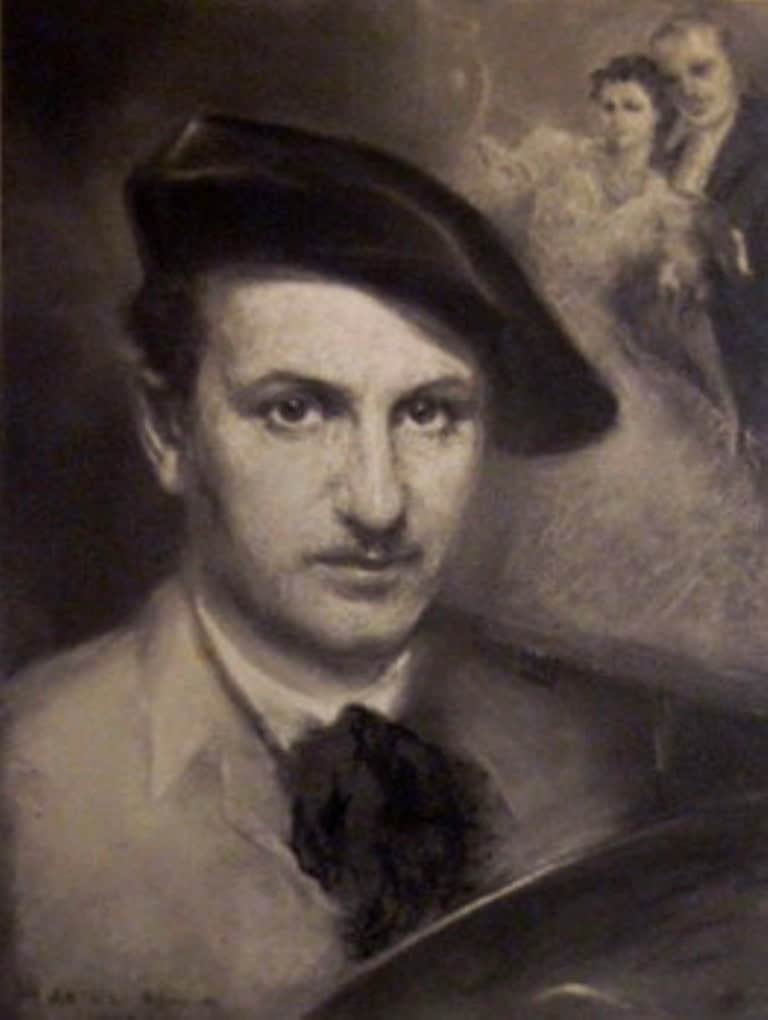Death of Ariel Agemian (November 28, 1963)

Ariel (Haroutiun) Agemian was born in Brusa, Turkey, in 1904. He was a survivor of the Armenian Genocide, during which he witnessed the death of his father and was separated from his mother and brother. The Mekhitarist monks first took him to Rome and soon brought him to Venice where he studied at the Moorat Raphael College until 1922.
In 1926, he graduated from the Venice Academy of Fine Arts with a Gold Medal award from the Associazione Artistica. He worked and taught in Italy until 1931 and then in Paris until 1938.
Agemian painted national themes reflecting Armenian ancient and contemporary history, frequently inspired by the paintings of the Italian Renaissance. He was also a portraitist and a landscapist, and the author of spiritual as well as secular paintings. These works can be found in Armenian and Western Catholic rite churches in France, Italy, Turkey, and the United States (New York City; Belmont and Springfield, both in Massachusetts, and Wynnewood, Pennsylvania). There are also paintings in the Moorat-Raphaël College and the St. Lazarus Monastery of the Mekhitarist Congregation in Venice, as well as in private collections in the United States and Armenia.
From 1931 to 1938, Agemian’s paintings of both religious and profane subjects were widely exhibited in Paris, Vienna, Venice, and Milan. His mural technique reflected the influence of old masters such as Titian. Subjects included portraits, still lifes, landscapes, nudes, figures, and battle scenes. His portraits were of dignitaries from the political, religious, and entertainment world, including Pope Pius XI and Cardinal Gregorio Agagianian.
In 1938, he decided to spend some time in America and study the American people for a series of works on democracy. Ultimately, he settled permanently in the United States. An art exhibit in 1939 in New York was described as one of the most extraordinary assemblages to be seen on art gallery row in a long time. He set up a studio in New York where he taught art and painted. He married Maria Roxas in June 1939, and they had two children.
Agemian became an American citizen in 1943 and began to work for the Confraternity of the Precious Blood, a publishing house for Catholic literature in Brooklyn. Agemian painted over 500 illustrations, which appear in the books My Daily Psalms, Christ in the Gospel, The Imitation of Christ, My Meditation on the Gospel, and My Mass. His reproduction of Christ, based on The Shroud of Turin, is considered the most exact by experts in the field of scientific research.
After arriving in America, the artist’s technique and subject matter noticeably changed to purely religious themes. He sketched daily, lived somewhat the life of a recluse, and his works were not displayed publicly again after 1939. In 1958, he was awarded a Gold Medal from Pope Pius XII and knighted into the Order of Saint Gregory.
Ariel Agemian passed away on November 28, 1963, in New York.
